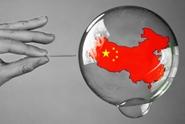Government/Policy

July 8, 2017
U.S. Steel’s Section 337 Case Delayed
Written by Tim Triplett
The administrative law judge presiding over U.S. Steel’s Section 337 case against Chinese steelmakers has extended the deadline for fact discovery by three weeks. The close of discovery is now set for July 15, pushing back the evidentiary hearing from September to mid-October.
![]() In the International Trade Commission case it filed in April 2016, U.S. Steel accuses Chinese steel companies of false designation of origin, alleging that they routinely misrepresent country of origin paperwork for products originating in China to avoid paying antidumping and countervailing duties on certain carbon and alloy steel products.
In the International Trade Commission case it filed in April 2016, U.S. Steel accuses Chinese steel companies of false designation of origin, alleging that they routinely misrepresent country of origin paperwork for products originating in China to avoid paying antidumping and countervailing duties on certain carbon and alloy steel products.
On June 28, U.S. Steel filed a motion claiming that three of the seven Chinese mills cited in the case have refused to produce documentation on shipments of steel to certain additional countries. U.S. Steel seeks discovery-related information on hot-rolled steel, cold-rolled steel, corrosion-resistant steel and oil country tubular goods from Chinese mills on countries they have allegedly transshipped steel products through, including Malaysia, Taiwan, Vietnam and Thailand. U.S. Steel believes the Chinese transshipments were nothing more than a blatant circumvention of U.S. trade laws. During the transshipment process the countries not subject to duties would repackage and mark the steel as being from that country and not China where the steel was actually produced.
U.S. Steel’s aim in the 337 case is to exclude Chinese steel from the U.S. market though a Section 337 exclusion order, even though very little Chinese steel is currently entering the country, notes Washington trade attorney Lewis Leibowitz. “An exclusion order could conceivably broaden into exclusion orders on other countries, but only if U.S. Steel can prove that Chinese steel is entering through a third country. It’s hard to know where this claim is going,” he said.






